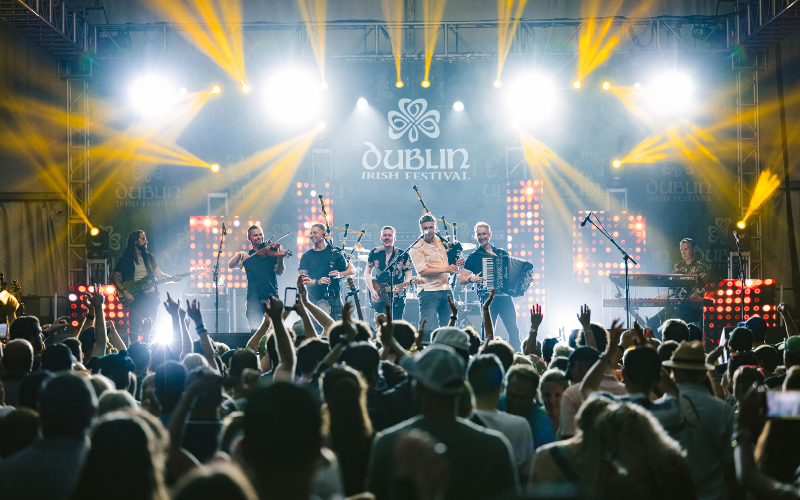There has been a 73.6 percent increase in the number of Irish people with no religion, according to the latest census results published earlier today.468,400 Irish people claimed no religion in the 2016 survey rising by 269,800 people since the 2011 census. This now comprises 9.8 percent of the Irish population, the second largest group in the religion category behind Catholics.
The results, the first of 13 reports to be published this year by the Irish Central Statistics Office (CSO) on the 2016 census, also showed a decline in the number of Catholics in Ireland.
Despite numbers declining from 3,861,300 to 3,729,100, however, Catholics still make up 78.3 percent of the Irish population, as of April 2016, compared to 84.2 percent in April 2011. This is despite the figures showing a much-reduced mass attendance across the country.
Back in 1991, 92 percent of the population identified as Catholic while only 2 percent responded with “no religion”. In 15 years, this has increased five times over to almost a tenth of the Irish population. The decline in Catholicism in Ireland may also be a result of a global trend noted by Pew Research Center which showed that across Europe the number of deaths among Christians exceeded the number of births.
Read more: Catholics abandon Mass in their droves according to new opinion poll
— CSO Statistics (@CSOIreland) April 6, 2017
Perhaps another telling figure for the steady decline of the influence of the Catholic Church in Ireland are the census results for those who are divorced, for cohabiting parents who are not married, and for the number of same-sex marriages.
There was a significant growth in the figures for couples with children who were not married, with the numbers from 2016 showing a 32 percent increase in the number of children of cohabiting couples.
The number of divorced people also increased by 16,125 to 103,895 in 2016; the previous intercensal increase was 28,236 persons. We may see this figure increase further again in the next census as the Irish government look to reduce the number of years a couple must have lived separately before qualifying for a divorce from at least 4 years during the previous 5 years to at least 2 years during the previous 3 years.
Included for the first time as an option on the census form in 2016 as a result of the 2015 marriage equality referendum, there was a total of 6,034 same-sex couples recorded, of whom 3,442 were male couples and 2,592 were female.
Overall, census 2016 results show that Ireland’s population stood at 4,761,865 in April 2016, an increase of 173,613 (3.8 percent) since April 2011. While counties such as Dublin and those commuter counties surrounding it have seen increases in their population, Co. Donegal and Co. Mayo were the only two counties to see a decline in their population since 2011.

Graph of the main statistics from the Irish census 2016.
The results also show that Ireland’s population is aging, with the average age increasing to 37.4 years from 36.1 years. This is a result of the increase of both men and women of 65 years old and over in the country. The number of males aged 65 and over increased by 22 percent to 296,837 while females aged 65 and over increased by 16.7 percent to 340,730.
The increase in population can be seen as a natural occurrence as a result of this aging population as opposed to increased immigration to the country. During the five-year period measured, there were 344,400 births and 148,300 deaths leading to a natural increase that according to the CSO, is still the slowest growth in the past 20 years.
With an increased number in those over 65 and under 15, the dependency ration of the country (the number of those needing support from others) has increased from 49.3 in 2011 to 52.7 in 2016, a rise of 3.4 points.
The first census 2016 report revealed the number of non-nationals in the country fell to 11.6 percent of the population (535,475). This is the first decline in non-nationals to be recorded since the question was introduced in 2002. The number of people with dual-Irish nationality has significantly increased, however, by 48,879 to 104,784 people since April 2011.
— CSO Statistics (@CSOIreland) April 6, 2017
Interestingly, the average age of the non-Irish population increased by 2.5 years (almost twice that of all persons) to 35.4 years, while amongst Polish nationals it increased by 3.5 years (from 27.9 to 31.4).
The Gaelic League (Conradh na Gaeilge) today announced their disappointment but their lack of surprise that the number of people who speak Irish daily outside of the education system declined by 3,382 (four percent) people to 73,803. There was, however, an increase in the people using Irish weekly outside of the education system. There was also a slight decrease in the number of participants who said they could speak Irish to 39.8 percent of respondents, compared to 41.4 percent in 2011.
The organization has questioned the investment made by the Irish government into the 20 Year Strategy for the Irish Language 2010-2030. The strategy’s aim is to increase the number of Irish speakers and the census figures, the League believe, confirm the government’s failure to effectively support this strategy.
As for foreign languages spoken in Ireland, 612,018 of Irish residents spoke a foreign language at home, an increase of 19 percent since 2011. Polish was the most common language, followed by French, Romanian and Lithuanian. Thirty percent of those who spoke a foreign language at home were born in Ireland, and 57.4 percent of these were children.
Do you think the census results reflect a changing Ireland? Will we see a further increase in people of no religion in the future? Let us know your thoughts in the comments section.




Comments